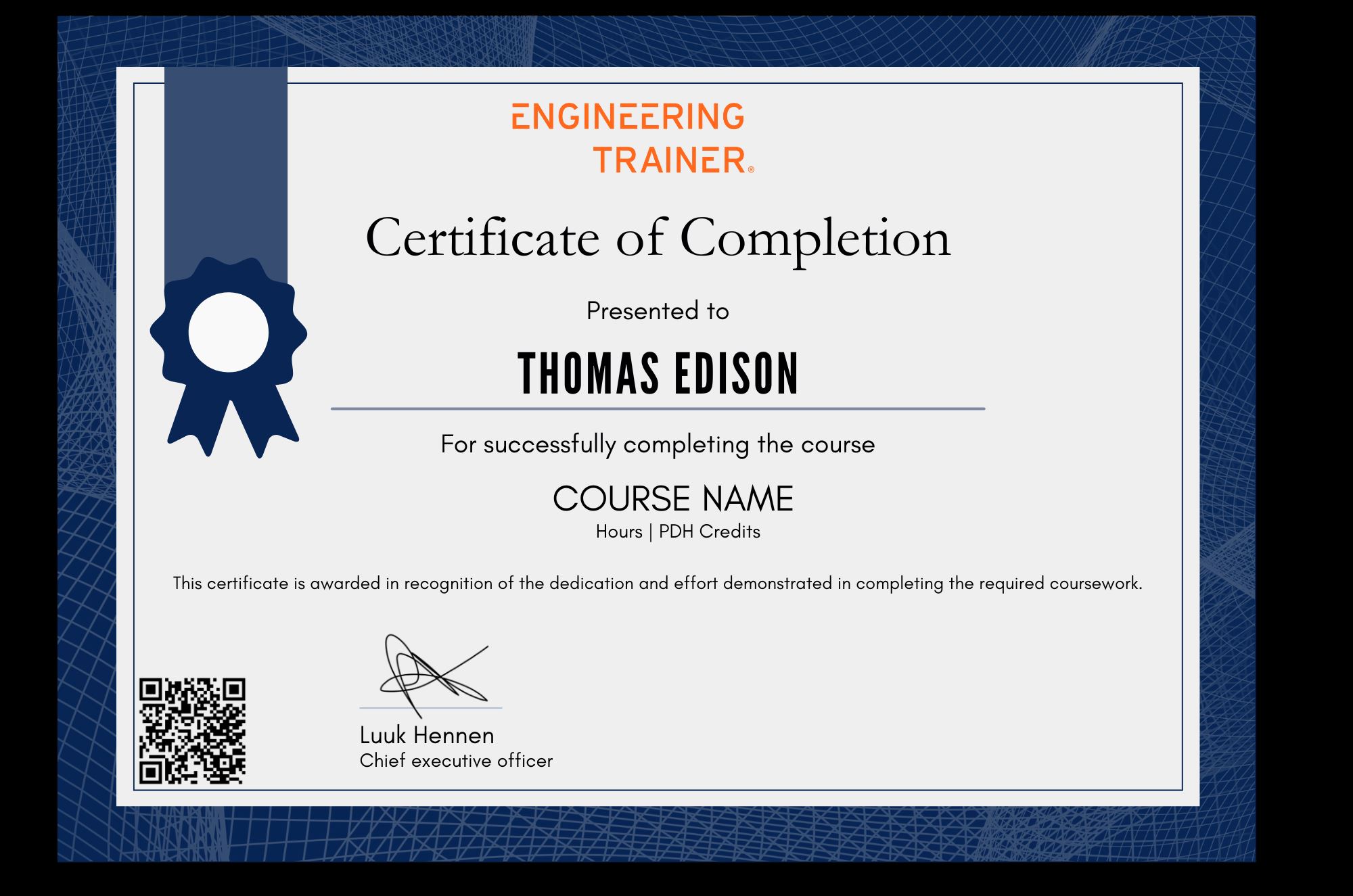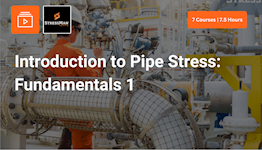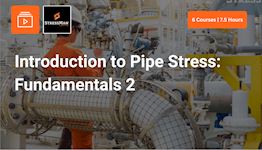Comprehensive Guide to Fatigue
About the course
Did you know that the number of structural failures due to fatigue is much larger than due to static overload? Managing and preventing problems due to metal fatigue should be considered a key capability of a structural engineer. Safe operation of your structural asset is important to you, you want to avoid your structure collapsing.
This course will give you a detailed overview of fatigue; practical advice and guidelines are given, and justified based on the theoretical background. After this course you will know exactly what fatigue is, what loads are causing fatigue, how you can control fatigue, how you can improve your design and which factors are good and bad for fatigue. With this knowledge you can determine a safe fatigue life for your structure.
The course consists of 14 online courses based on video lectures. Participants also gain access to a technical archive of fatigue related articles by the instructor. All training content is provided through your EngineeringTrainer account.
Learning Outcomes
After this course, you...• have a fundamental understanding of high cycle fatigue, and how to interpret the fatigue calculation methods in industry standard codes.
• know how to identify fatigue critical locations, and are familiar with the analysis methods (both analytical and FEA) to predict the fatigue life.
• understand the limitations of fatigue life analysis and the effect of scatter.
• have seen how fatigue behaviour is impacted by the mean stress, the surface condition and surface treatment.
• understand how fatigue behaviour is impacted by the environment, such as temperature and corrosion.
• have seen the concepts for damage accumulation and combined fatigue loading.
• understand how to test structural components for fatigue.
• know the crack growth mechanism and can calculate the residual strength.
Who should attend this course
Those involved in structural design or reviewing designs:• Stress engineers
• Structural designers
• Test engineers
• Lead engineers
• Engineering managers
Prerequisites
An understanding of loads and stressesA basic understanding of material behaviour
Program & Details
-
Welcome
1. Welcome & Your instructor
2. Content overview
3. How to use this course
4. Personal Certificate requirements
5. Questions Forum -
Course 1 - What is Fatigue
1. What is fatigue? Why is fatigue important?
2. Fatigue mechanisms & phenomena -
Course 2 - Fatigue of Materials
1. Effect of materials
2. Effect of mean stresses
3. Type of loading -
Course 3 - Effect of Notches
1. Stress concentrations
2. Notch sensitivity factor -
Course 4 - Fatigue Analysis - Nominal Stress
1. Introduction
2. Fatigue predictions using nominal stresses
3. Examples
4. Safety Factors -
Course 5 - Fatigue Analysis - Local Stress
1. Fatigue prediction using local stresses
2. Examples
3. Fatigue prediction using FEA -
Course 6 - Designing Against Fatigue
1. Design process
2. Accuracy of fatigue analyses
3. Practical examples of good and bad design -
Course 7 - Fatigue of Joints
1. Fatigue of welded joints
2. Fatigue analyses for welded joints
3. Bolts loaded in tension
4. Bolts & rivets loaded in shear -
Course 8 - Variable Amplitude Loading
1. Load spectra
2. Cycle counting
3. Damage accumulation -
Course 9 - Residual stresses &
Surface conditions
1. Residual stresses
2. Surface conditions -
Course 10 - Environmental Effects
1. Effect of temperature
2. Corrosion & stress corrosion cracking (SSC)
3. Corrosion fatigue
4. Fretting -
Course 11 - Linear Elastic Fracture Mechanics and Fatigue
1. Stress Intensity Factors
2. Crack growth under constant amplitude loading
3. Crack growth under spectrum loading
4. Residual strength
5. Crack growth and residual strength analysis -
Course 12 - Testing and Scatter
1. Experimental approach
2. Coupon testing through to full scale testing
3. Quantification of scatter
4. Scatter factors and coupling with safety factors -
Course 13 - Multi-axial Fatigue
1. Multi-axial stress states
2. Fatigue mechanism under multi-axial stress state
3. Proportional and non-proportional multi-axial stress states -
Course 14 - Fatigue & Maintenance
1. Maintenance policies in relation to fatigue
2. Reactive and preventive maintenance -
Final Notes & Certificate
1. Congratulations
2. Course evaluation survey
3. Your Personal Certificate
4. Rate this course
5. Related courses
Certification

Contact us to Learn More

Why choose EngineeringTrainer
-
Unlimited Team-wide Access
-
Advance Technical Competences
-
Courses by Industry Authorities
Since using EngineeringTrainer our internal mentorship has a much more matured character.
Logan Chapman - COO at Chapman Consulting Inc.









